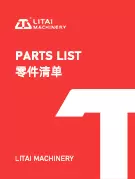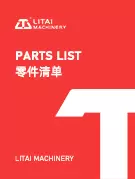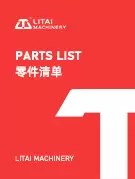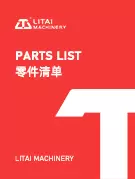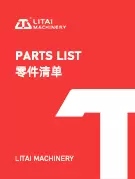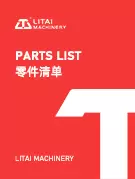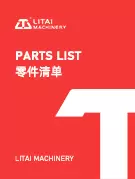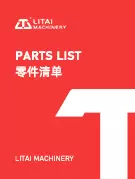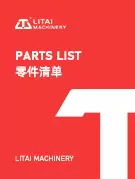
 LITAI MACHINERY
LITAI MACHINERY
 Nov 10 2022
Nov 10 2022
 LITAI MACHINERY
LITAI MACHINERY
The mold is a very critical tool in the thermoforming process, but we cannot use a certain method or method to evaluate the quality of a set of thermoforming molds in actual production, which makes us unable to do anything when doing mold acceptance. Insights for thermoforming molds are as follows:
First, the cooling performance of the mold
This cannot be evaluated by a quantitative method. Generally speaking, 20 sets of parts are continuously produced with a rhythm within 20 s, and the ejection temperature of the parts does not exceed 220 °C, that is, the set of molds is considered to have good cooling performance. Another method is to pass hot water into the mold to observe the temperature change of the mold (it needs to be used with a thermal imager).
Second, the life of the mold (ie wear)
Because the thermoforming mold is subjected to environmental changes of alternating temperature, and at the same time, it is subjected to friction from the high-hardness metal compound on the surface of the product, so that the thermoforming mold is actually under extreme working conditions, which will cause the mold to have different wear performances. It should be discussed separately according to the type of tablet during production:
Bare board material - uneven oxide scale will inevitably occur during the transmission process after the sheet is heated. This high-hard and easily falling oxide scale provides the abrasive grains and roughness of abrasive wear on the surface of the sheet and the mold. As a result, the thermoforming mold is prone to serious scratches and serious scratches on the surface of the product when it is used.

Bare board material mold
There are the following improvement measures for bare boards:
1. Minimize the production of scale
-----Control the oxygen content in the heating furnace (below 2%)
-----Control the amount of oil on the web (preferably lightly oiled)
----- Reasonable frequency of oxide skin cleaning (recommended once every two hours for a higher frequency)
2. Add high temperature lubricant directly on the surface of sheet and die. This method is generally used in the debugging process, and is generally not recommended in the mass production process, which will greatly affect the production efficiency.
3. Improve mold surface hardness and surface wear resistance.
To improve the surface hardness of the mold, surface treatment technologies such as nitriding and carburizing can be used, and hot work die steel with high carbon content and chromium content can also be used. But no matter which method has limitations, the effect in the actual production process is not ideal. Carburizing and nitriding layers are easy to fall off.
Too high carbon content will produce too much carbide, which is the source of potential thermal fatigue cracking; in addition, too high chromium content will reduce the thermal conductivity of the mold. Special attention should be paid not to choose materials with weak wear resistance under bare board conditions.

Coating (Al-Si) material - Due to the protection of the aluminum-silicon coating, no oxide scale is generated during the heating process of the sheet. Therefore, the main failure mode of the mold is thermal fatigue cracking, and the mold pulling is usually not obvious in the early stage of SOP.
Materials with excellent thermal fatigue resistance should be selected for the coated plate insert material, and the heat treatment hardness should be controlled at HRC48-52. It must be remembered that the hardness should not be too high, otherwise the insert will be easily cracked.
Coated plate mould
Another disadvantage of the Al-Si coating material is that it rubs against the surface of the mold during the forming process, which will cause the coating to peel off and stick to the mold. In order to reduce the peeling of the sheet coating due to friction, the finish of the mold surface becomes a decisive factor.
However, due to the low hardness of the mold surface, the initial good finish cannot be maintained for too long. PVD surface treatment can deposit a high-hard wear-resistant coating on the mold surface at low temperature, but the coating life is very short. If it is found that the coating of a certain set of molds has fallen off seriously, please reduce the batch production and increase the maintenance frequency.

Thermoforming Mould Supplier - LITAI
LITAI MACHINERY CO, LTD is founded in 2001. For more than 20 years, our enterprise mission is to realize producing automatic plastic packaging machines. Our thermoforming molds are of high quality. Welcome to inquire, we will provide you with the best quality product consulting services!









 Recommended news
Recommended news 

